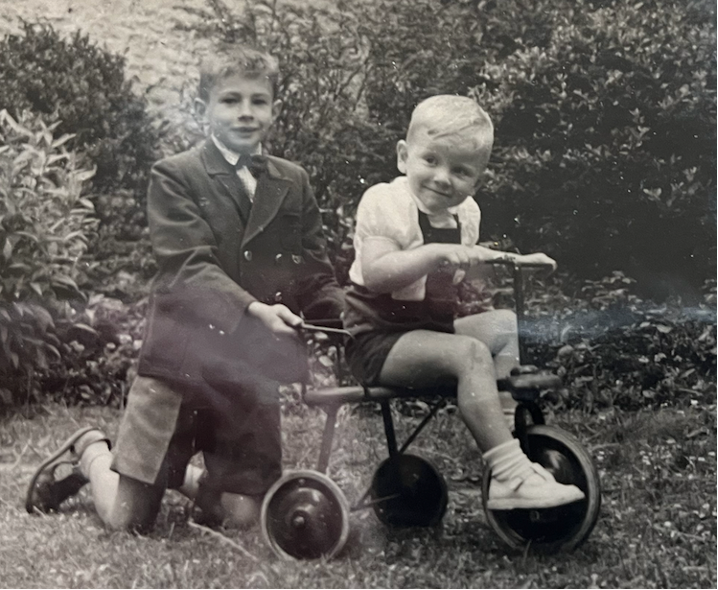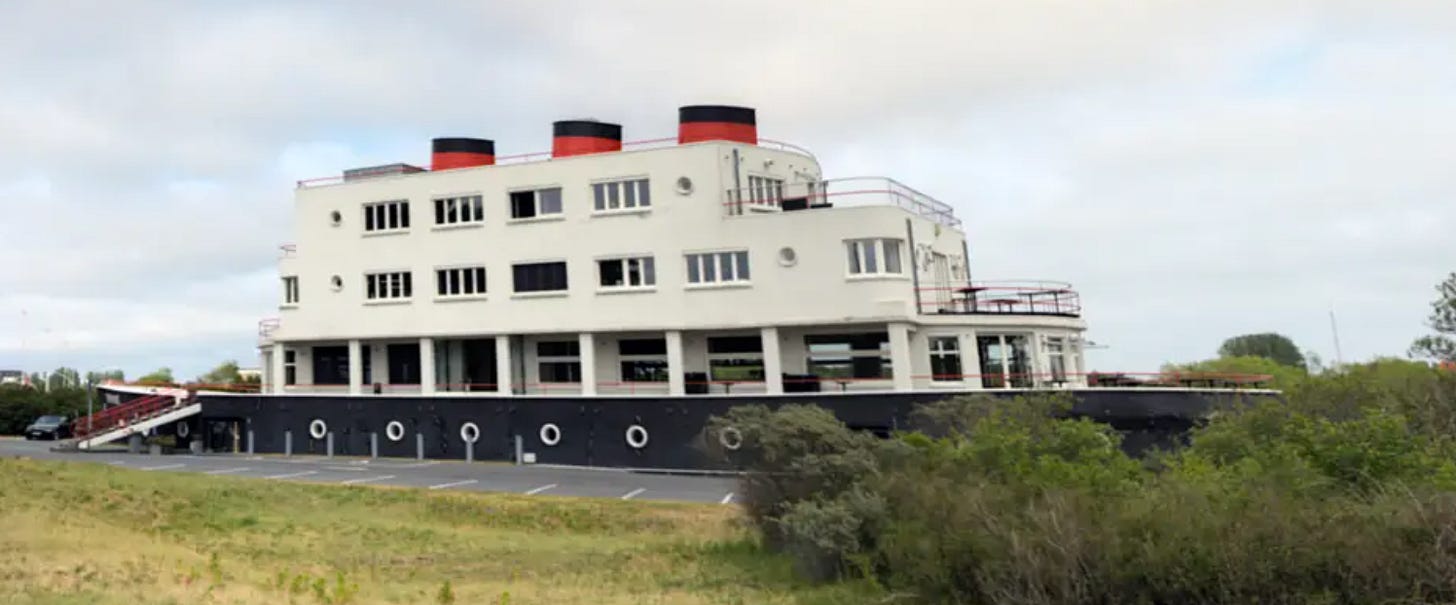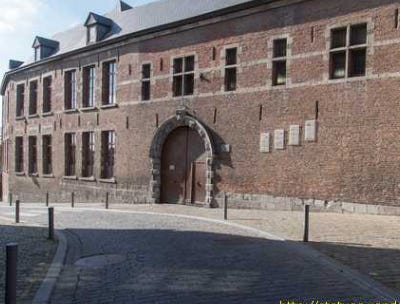When my brother Damien was born, I was sent to kindergarten. I was three years old. I felt a bit terrified, because I did not know anybody. The class was small, crowded and very noisy. The worst for me was the playground. The sons of Italian miners who were taller, older and stronger were big bullies, intimidating smaller kids like me. I would dread the moment they would grab my morning snack, which happened often. Once, I had received a plastic toy watch and I proudly took it to school, but a taller kid grabbed it from my wrist. I complained to the person supervising the playground, but she just shrugged her shoulders. My mother saw that I was unhappy in kindergarten and took me out after a few weeks. I was glad to spend again days playing alone in the quietude of my maternal grandparents’ home.
My mother tried to invite other young children of my age at home. We played together but did not really become friends. This was to become one of my characteristics: I always socialized with many people, but only developed deep friendships with very few people in my life. When I had such a friendship, it would illuminate my life.
I do have fond memories of playing with my mother’s young cousin Patrick Leclercq (the son of Victor and Gine Leclercq who had lived in China and been in a Japanese concentration camp, except for their youngest son Patrick who was born just after the war) who was 11 at the time (I was 3). He was very kind and I was proud to play with an older boy. He later made me discover the comic strips of the Dupuis publisher (Spirou, Lucky Luke,…), which for some reason were not allowed in the Soignies Roland family, which only tolerated Tintin.
Picture: Me with my cousin Patrick Leclercq (circa 1957) in the garden of my maternal grandparents in Mons.
My father also played a lot with me when he was at home, which was not always the case as he traveled a lot. He was full of imagination and we invented lots of stories, at home but also outside. I remember playing with him in the dunes at the Belgian seaside, reenacting imaginary war scenes, or cowboy and Indian chases. To this day, I love running and jumping in the Belgian dunes (or any other similar-looking dunes) and I tried to renew this excitement with my daughters when they were little.
Seaside activities on the Belgian coast were always a lot of fun, even when the sky was grey, which was more often the case. We would go on the beach with a shrimp net to catch the famous Belgian grey shrimp (still one of my favorite foods). These small shrimps were nearly transparent and could only be caught with a fine net. Even though they are called grey shrimp, they take a light pink color when cooked. They are delicious and can be eaten nearly only in Belgium (and Holland). Unfortunately, they are being overfished and are more and more difficult to find. Other activities consisted in building sand castles with elaborate moats to protect them from the assaults of the waves. Inevitably, with the tide rising, the water would first fill the moats and eventually destroy the castles. The game consisted in seeing how long one could remain on top of the sand castle before the sea would engulf its last walls and towers, and then run back to the safety of the beach. Another great activity was to rent small cars on the dike[1] that I would pedal, imagining I was a grownup driving a car. One of my favorite sights when we were driving parallel to the seaside was watching a few restaurants that had the shape of a boat.
[1] In every town along the Belgian seaside, dikes have been built above the beaches to prevent flooding of the houses and streets behind the beaches, as a large part of the land close to the sea is below sea level (this land is called polders). A favorite pastime of Belgians is to have long walks along these dikes and to inhale the fresh air from the North sea.
Me walking on the dike at De Panne on the Belgian seaside with my mother,
my paternal grandmother and my little brother (circa 1958).
Boat restaurant in Koksijde, Belgian seaside.
When I was still four years old (close to my 5th birthday though), my father decided to send me to school. He was confident I would be a very fast learner. This was indeed the case, but it was not necessarily a source of happiness, as I explain below. I learned to walk alone to school on the narrow, dark and winding cobbled streets of Mons. It was not that complicated: turn left after leaving my grandparents’ house rue du 11 novembre, then again left into the rue d’Enghien towards the grand-place, but before then a sharp right turn into rue Cronque, a very narrow and climbing street, then left again into a widening and descending street (rue des Gades) and then a right turn and a little walk until I saw the big arched wooden door of the school. It may sound bizarre to today’s reader to send a four-year old child alone on the streets on his way to school, but it was seen as completely normal at the time. I was lucky to live not too far from the school. Other children had to form walking lines that would drop them off in different directions in the city. There were no school buses, even less parents picking up their children by car.
For my first day of school, I received a leather case with straps to carry it on my back. I loved the warm and earthy smell of new leather. Any time I smell new leather, my memory brings me back to those times. In the case, I carried a calligraphy writing notebook, a dip pen (each school bench contained an ink pot), a pencil with an eraser and a pencil sharpener as well as a small slate with a piece of chalk to do simple arithmetics, and also a little sponge to erase the chalk marks. This was all quite exciting and I was eager to learn letters and numbers. The less funny part of school was the recess. As I was younger and smaller than the other children, I would often get beaten up and would stand alone against a wall waiting for the recess to end. I would often come home with scorched knees that my mother would clean and smear with mercurochrome. My knees were more often red than not from the constant care to my knees. To compensate for the recess bullying, I would try to do my best in class and excel in learning, a form of revenge against the bigger bullies. As one can expect, this resulted in even more recess bullying. Another mundane problem I had is that I had not learned (or had forgotten how) to tie the laces of my gym shoes. The gym teacher scolded me each time. I dreaded going to the gym and the other kids made fun of me for “being a sissy” unable to tie my laces. Despite all that, school was for me much more bearable than kindergarten and I was very proud to show my mother my progress in school. As a child, I had a low immunity and was often sick, so I had to stay home with high fever. My mother always helped me continue learning even when I was bedridden. She always made sure I was never behind in my homework, something she did with her 3 children during all their first years of school. Eventually, my first school year in Mons did not last long. After the first trimester, my father announced that we would leave for Cairo.
Ecole des Frères, Mons where I learned to read and write.








Interesting!